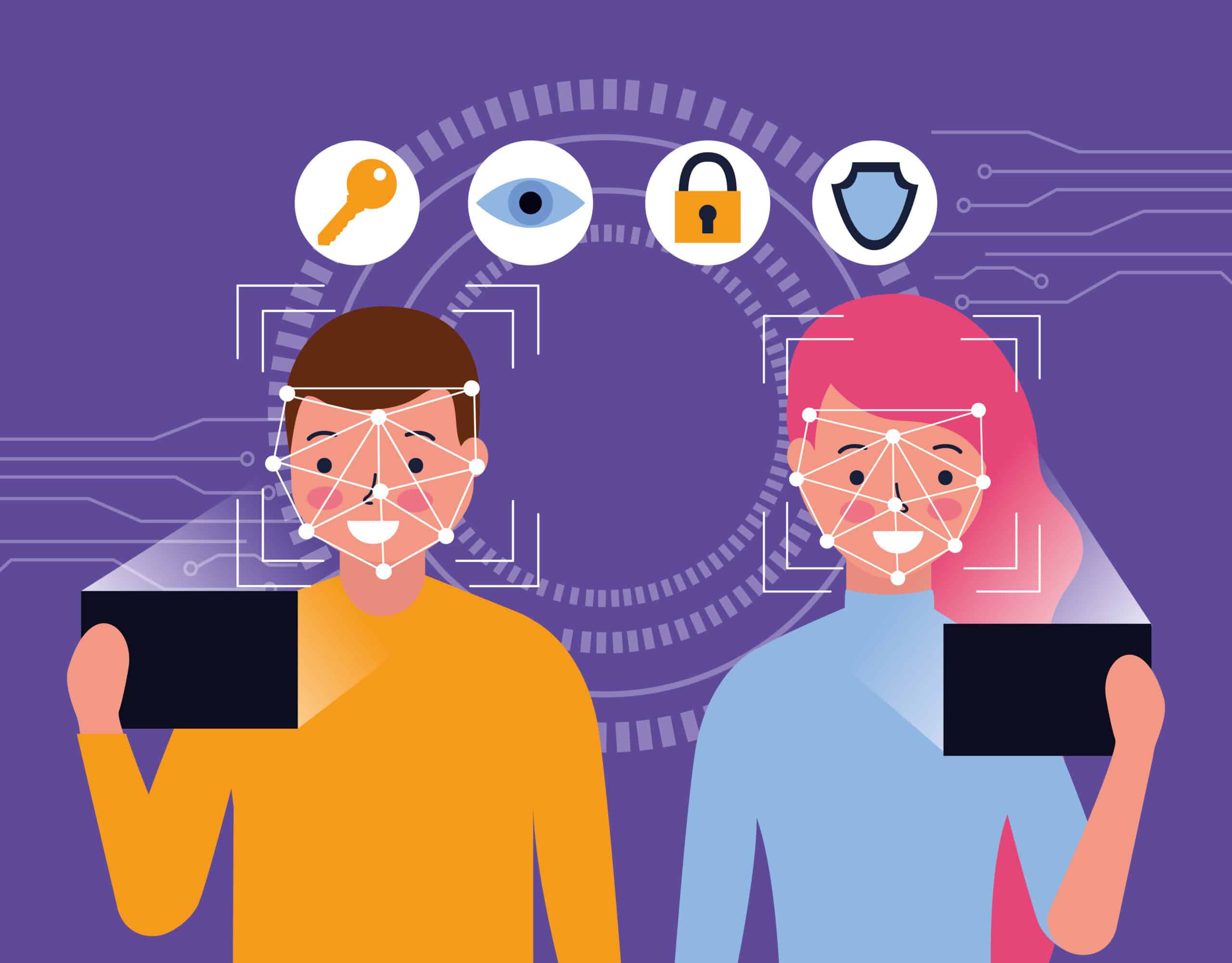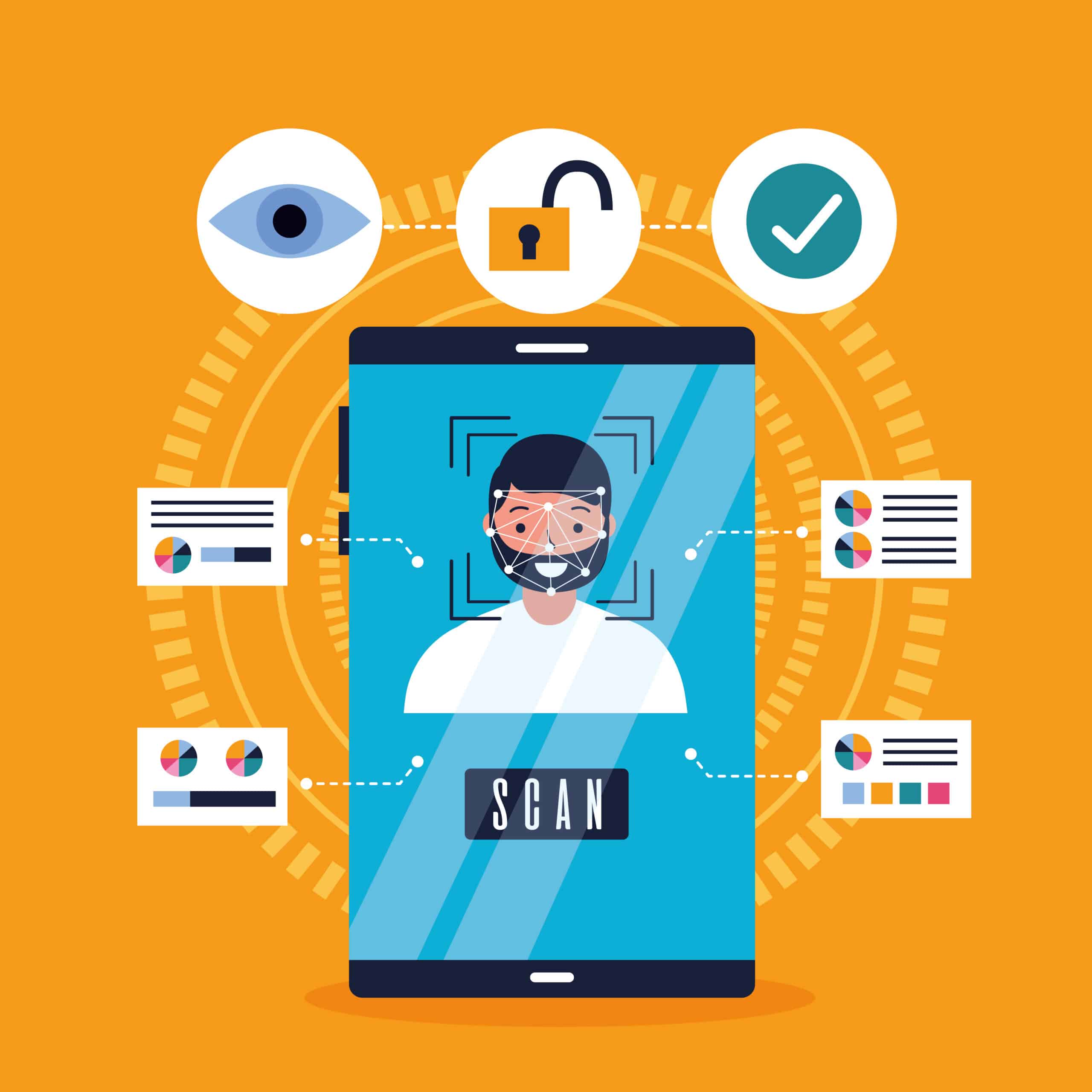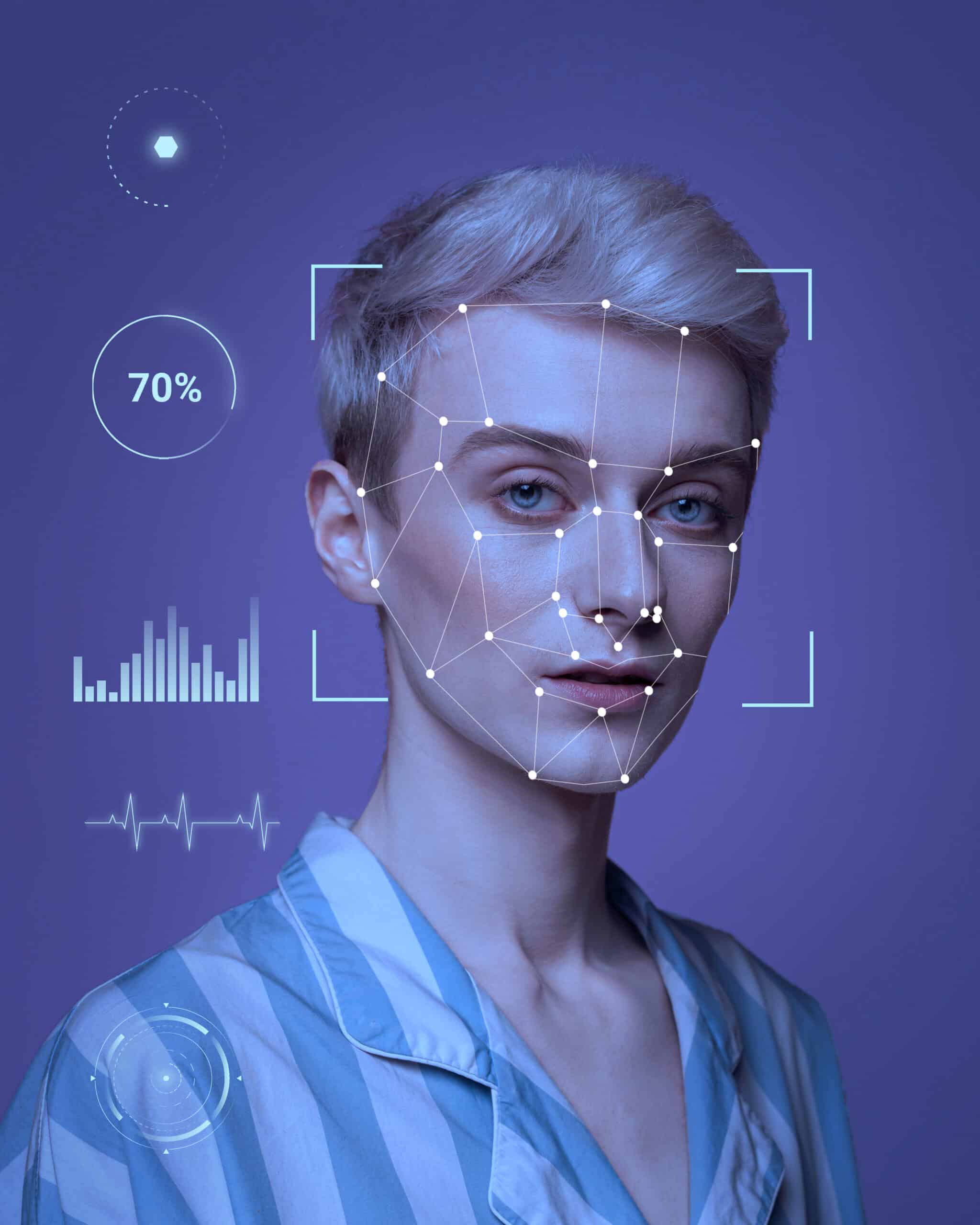Facial Recognition Identity Verification: Secure Seamless Authentication


In today’s fast-paced digital world, ensuring secure and seamless authentication is essential for businesses. Facial recognition identity verification has emerged as a cutting-edge solution to address this need.
It enhances security, improves user experience, and offers a cost-effective way to verify identities, revolutionizing the way businesses operate.
This article will explore how facial recognition identity verification works, its importance, use cases, benefits, challenges, and how businesses can implement this technology effectively. Let’s dive into the key to seamless authentication – facial recognition identity verification.
What Is Facial Recognition Identity Verification?
Facial Recognition Identity Verification involves the use of biometric technology to authenticate individuals based on their unique facial features. It is a cutting-edge authentication process that leverages advanced facial recognition systems to verify user identity.
Facial biometrics, a key component of this technology, analyze distinct facial characteristics like the spacing of eyes, nose shape, and overall facial structure to create a unique biometric template for each individual. This template is then compared with registered data to provide secure identification. Additionally, face recognition systems use complex algorithms to map facial features and patterns, matching them with stored data to ensure accurate verification. The significance of using facial features in authentication lies in their permanence and individuality, making them reliable and secure identifiers in the authentication process.
How Does Facial Recognition Identity Verification Work?
Facial Recognition Identity Verification operates by scanning facial images, analyzing facial patterns through machine learning algorithms, and matching them against stored data for authentication purposes. This authentication process involves precise facial scanning and advanced facial matching techniques.
Machine learning algorithms play a crucial role in facial analysis by detecting and recognizing unique facial features such as the distance between eyes, nose shape, and jawline. Through pattern recognition, these algorithms can learn and adapt to variations in facial expressions, lighting conditions, and angles to increase accuracy in facial matching.
The authentication process typically consists of comparing the captured facial image with the pre-registered data by measuring similarities and dissimilarities based on specific facial markers. Various authentication methods like 3D facial recognition and liveness detection are employed to enhance security and prevent spoofing attempts.
Why Is Facial Recognition Identity Verification Important?
Facial Recognition Identity Verification is crucial for ensuring secure access, protecting user data, and implementing robust security measures. It enhances data security by providing advanced user authentication through facial recognition technology.
This form of secure authentication is becoming increasingly popular due to its ability to accurately verify a person’s identity. Also, by using facial characteristics unique to each individual, such as the arrangement of facial features or the shape of the face, this technology can effectively prevent unauthorized access.
In addition to enhancing security, facial recognition also offers a convenient and efficient way for users to access their devices and accounts securely, without the need for remembering complex passwords. This streamlined user authentication process not only simplifies the login experience but also reduces the risk of data breaches and identity theft.
Enhanced Security
Facial Recognition Identity Verification offers enhanced security measures, ensuring secure access through advanced authentication solutions that streamline identity management processes. It provides secure authentication mechanisms based on facial recognition technology.
This cutting-edge technology utilizes unique facial features to verify individuals’ identities, offering a more secure and convenient way to access sensitive information. Additionally, by analyzing key facial landmarks and patterns, facial recognition systems create digital representations that are almost impossible to replicate, significantly reducing the risk of unauthorized access. Through continuous advancements in facial recognition algorithms, organizations can enhance their security protocols and improve overall identity management practices, ensuring that only authorized individuals are granted access to restricted areas or systems.
Improved User Experience
Facial Recognition Identity Verification enhances user experience by simplifying user authentication processes through facial recognition technology. Also, it enables seamless user recognition and access to various services.
This technology allows users to securely access their devices, accounts, and applications with just a glance, eliminating the need for passwords or PINs which can be forgotten or compromised. By leveraging biometric data unique to each individual, facial recognition ensures a high level of security while offering convenience. Additionally, the speed and accuracy of facial authentication contribute to a smoother overall user experience, boosting efficiency and minimizing potential friction points that often arise during traditional authentication methods.
Cost-effective Solution
Facial Recognition Identity Verification serves as a cost-effective solution for the identification process, offering high verification accuracy and efficient authentication systems. It provides effective identity verification solutions through facial recognition technology.
This technology streamlines the verification process by quickly analyzing facial features to ensure secure authentication. By incorporating advanced algorithms, authentication systems are able to accurately match individuals against stored data, reducing the margin of error.
The seamless integration of facial recognition technology into identity verification solutions enhances security protocols by providing a reliable and efficient method of confirming an individual’s identity. The automated nature of facial recognition minimizes the need for manual intervention, saving valuable time and resources in the identification process.
What Are the Use Cases of Facial Recognition Identity Verification?
Facial Recognition Identity Verification is applied in various use cases such as access control, customer onboarding processes, and time and attendance tracking. It leverages facial biometrics for seamless verification and authentication purposes.
In access control systems, facial recognition technology enhances security measures by allowing authorized individuals access, ensuring a more efficient and secure environment. Also, when integrated into customer onboarding processes, it streamlines the verification process, minimizing manual efforts and improving the overall customer experience. Within attendance tracking systems, facial biometrics provide a convenient and accurate way to monitor employee presence without the need for physical identification methods.”
Access Control
Facial Recognition Identity Verification plays a crucial role in access control systems, enabling secure access through precise identity authentication and facial biometric recognition. It enhances access control mechanisms through advanced facial recognition technology.
By leveraging sophisticated algorithms and biometric data, facial recognition technology offers a seamless and effective identification process, ensuring only authorized individuals can access restricted areas or sensitive information.
This form of authentication provides a high level of security as it is challenging to duplicate or forge, making it a reliable method for safeguarding access points.
With facial recognition, organizations can streamline their security protocols and improve overall efficiency in managing access control systems.
Customer Onboarding
Facial Recognition Identity Verification simplifies customer onboarding procedures by utilizing facial detection technology, advanced identity verification methods, and precise facial matching. It streamlines the onboarding process through accurate facial identification mechanisms.
This innovative technology enhances security measures by authenticating customers through the unique biometric identifiers of their faces, ensuring a high level of accuracy in verifying identities. By integrating facial recognition into the onboarding process, businesses can mitigate the risks associated with fraudulent activities and enhance the overall customer experience.
Facial identification technology provides a seamless and efficient way for customers to onboard without the need for extensive paperwork or manual verification processes, saving both time and resources for organizations.
Time and Attendance Tracking
Facial Recognition Identity Verification is instrumental in time and attendance tracking systems, employing biometric identification and secure authentication mechanisms for accurate facial verification. It streamlines attendance processes through facial recognition technology.
This technology revolutionizes traditional methods by providing a fast and secure way to monitor attendance, eliminating the need for manual tracking and reducing errors. With facial verification, employees can simply have their faces scanned to mark their attendance, ensuring accuracy in tracking work hours. The use of secure authentication techniques such as liveness detection enhances the system’s reliability, preventing fraudulent practices. Facial recognition systems offer advanced features like real-time monitoring and reporting, making them an invaluable asset for efficient workforce management.
What Are the Benefits of Facial Recognition Identity Verification?
Facial Recognition Identity Verification offers multiple benefits, including accurate and rapid authentication, scalability for diverse applications, and robust fraud prevention mechanisms. It leverages advanced authentication technology for seamless identity verification.
This innovative technology allows for fast and secure authentication processes, making it ideal for various industries from banking to healthcare. Its scalability enables it to be easily integrated into existing systems, providing a comprehensive solution for organizations of any size. Its ability to prevent fraud by detecting and reacting to suspicious activities in real-time is a crucial advantage, ensuring a higher level of security and accuracy in identity verification processes.
Accurate and Fast Authentication
Facial Recognition Identity Verification ensures accurate and rapid authentication processes through user recognition, biometric face recognition technologies, and precise identity validation. It relies on facial data for efficient identity verification.
This innovative technology has revolutionized the way authentication is conducted, making processes seamless and secure. By analyzing unique facial features such as the distance between the eyes, nose, and mouth, facial recognition systems can quickly match a person with their stored biometric data for instant verification.
User recognition plays a crucial role in ensuring that only authorized individuals can access sensitive information or facilities, enhancing security measures across various industries. The precision of this biometric face recognition technology ensures a high level of accuracy in confirming identities, reducing the risk of security breaches and unauthorized access.
Scalability
Facial Recognition Identity Verification offers scalability across various applications by analyzing facial patterns, conducting facial analysis, and optimizing identity verification processes. It enhances authentication methods through facial recognition technologies.
This innovative technology not only streamlines the identification process but also ensures higher accuracy rates in verifying individuals’ identities. By utilizing advanced algorithms to analyze unique facial features, facial recognition technology allows for quick and reliable identity verification. The scalability of this technology enables seamless integration with different systems and applications, providing a more efficient and secure approach to identity authentication. The sophisticated facial analysis techniques used in this process help detect even subtle variations, enhancing the overall security and reliability of identity verification procedures.
Fraud Prevention
Facial Recognition Identity Verification aids in robust fraud prevention measures by utilizing facial detection technologies, advanced facial biometrics, and precise identity authentication mechanisms. It enhances identity validation processes through facial recognition solutions.
This innovative technology plays a crucial role in safeguarding sensitive information and transactions by verifying the identity of individuals based on unique facial features. Facial recognition technology has evolved significantly, leading to improved accuracy in identifying and verifying individuals in a matter of seconds.
By analyzing facial biometrics such as facial structure, dimensions, and patterns, organizations can ensure secure access and prevent fraudulent activities. The use of facial detection algorithms further enhances security measures in various industries, from finance to security to healthcare, contributing to a more secure and efficient authentication process.
What Are the Challenges of Facial Recognition Identity Verification?
Facial Recognition Identity Verification faces challenges such as privacy concerns regarding facial data storage, biases and inaccuracies in facial analysis, and the ethical use of facial recognition technology. These challenges impact the accuracy and reliability of identity verification processes.
Privacy concerns associated with the storage of facial data raise questions about who has access to this sensitive information and how it is being protected. Biases in facial analysis algorithms can lead to incorrect identifications, particularly affecting marginalized communities.
Ensuring the ethical use of technology entails establishing guidelines on when and how facial recognition should be deployed to safeguard individuals’ rights and prevent misuse.
Privacy Concerns
Privacy concerns surround the use of Facial Recognition Identity Verification due to the storage and security of facial images, digital security vulnerabilities, and the protection of user access. It raises questions about the ethical use of facial authentication technologies.
Facial recognition technology has the potential to revolutionize security measures and streamline identification processes, but it also comes with significant risks. The storage of facial images raises issues concerning data privacy and the possibility of unauthorized access to sensitive personal information. Digital security vulnerabilities, such as hacking and spoofing, pose threats to the integrity of facial authentication systems.
Ensuring robust user access protection mechanisms is crucial in safeguarding individuals’ privacy and preventing potential misuse of facial recognition technology.
Biases and Inaccuracies
Biases and inaccuracies in Facial Recognition Identity Verification systems stem from machine learning algorithms, facial pattern variations, facial detection limitations, and complexities in the identification process. These factors impact the reliability of facial recognition technologies.
The challenges with biases and inaccuracies in facial recognition go beyond just technical limitations. Biases can be ingrained from the data used to train these systems, leading to discriminatory outcomes.
For example, if the dataset used for training the algorithms lacks diversity, the system may struggle to accurately identify individuals from different racial or ethnic backgrounds. This can result in misidentifications and exacerbate existing biases within society.
Facial patterns can change over time due to various factors like aging, facial hair, or even different lighting conditions, further complicating the accuracy of the recognition process.
How Can Businesses Implement Facial Recognition Identity Verification?
Businesses can implement Facial Recognition Identity Verification by selecting the appropriate technology, ensuring compliance with regulatory standards, and educating users about the benefits and functionalities of the technology. It involves deploying seamless identity authentication solutions based on facial recognition technology.
One crucial aspect in integrating facial recognition for identity verification is the careful selection of a reliable technology that aligns with the specific needs of the business. Ensuring compliance with regulations is paramount to safeguard user data and maintain trust. Educating users about the seamless user experience and heightened security offered by seamless identity authentication can help in overcoming initial resistance or concerns. By proactively addressing these key elements, businesses can successfully leverage facial recognition technology for robust identity verification processes.
Choosing the Right Technology
Selecting the right technology for seamless identity authentication involves evaluating facial attributes, conducting precise facial scanning processes, implementing seamless identity authentication mechanisms, and ensuring accurate authentication. It is essential for achieving secure identity verification through advanced facial recognition systems.
The accuracy of facial recognition technology largely depends on the ability to capture and analyze key facial attributes, such as the distance between the eyes, shape of the nose, and contours of the face. These attributes serve as unique identifiers for identity verification.
The scanning process plays a crucial role in capturing these details accurately, allowing the system to match the scanned face with the stored template. Also, secure verification mechanisms, like liveness detection and anti-spoofing measures, help prevent fraudulent activities and ensure the authenticity of the user.
Also, by combining advanced facial scanning technology with robust identity authentication protocols, organizations can enhance security and user experience.
Ensuring Compliance with Regulations
Ensuring compliance with regulations in Facial Recognition Identity Verification requires robust data protection measures, secure identity authentication processes, and the implementation of reliable identity verification systems. It involves adhering to regulatory standards for facial recognition systems.
These regulatory standards are vital to address concerns around data privacy and security in the realm of facial recognition technology. Organizations must prioritize safeguarding the sensitive biometric data collected during identity verification processes. Tight controls on access and storage of this data are essential to prevent unauthorized use or breaches.
Strict guidelines should be followed for the authentication of individuals through facial recognition systems, ensuring that only authorized persons are granted access. Also, proper training of personnel handling these systems is crucial for their effective implementation.
Educating Users about the Technology
Educating users about Facial Recognition Identity Verification technology entails explaining facial biometric technologies, the identity verification process, facial recognition algorithms, and the importance of secure facial recognition mechanisms. It aims to familiarize users with the functionalities and benefits of facial recognition systems.
This education empowers users to understand how facial biometric technology analyzes and detects unique facial features for accurate identification. Additionally, by delving into the intricacies of facial recognition algorithms, users can comprehend how these algorithms convert facial characteristics into data for secure recognition.
Through this understanding, users also gain insights into the robust verification processes that ensure accurate and reliable identity verification. Additionally, The knowledge about secure facial recognition mechanisms further emphasizes the importance of safeguarding personal information and data privacy in the digital age.
Frequently Asked Questions
What is Facial Recognition Identity Verification?
Facial Recognition Identity Verification is a technology that uses biometric data to verify a person’s identity by comparing their facial features to a database of known faces. Additionally, It is a form of authentication that can be used for various purposes, such as access control, secure transactions, and identity verification.
How does Facial Recognition Identity Verification work?
Facial Recognition Identity Verification uses algorithms to analyze and measure various points on a person’s face, such as the distance between the eyes, nose, and mouth. Additionally, These measurements are then compared to a database of stored facial templates to determine a match or non-match.
What makes Facial Recognition Identity Verification a key to seamless authentication?
Facial Recognition Identity Verification is considered a key to seamless authentication because it eliminates the need for physical identification documents or passwords, making the process quicker and more convenient. It also eliminates the risk of fraud or human error, providing a more secure form of authentication.
What are the benefits of using Facial Recognition Identity Verification?
Facial Recognition Identity Verification offers several benefits, such as increased security, improved user experience, and reduced fraud. It also eliminates the need for physical IDs or passwords, saving time and resources for both individuals and organizations.
Is Facial Recognition Identity Verification accurate?
Facial Recognition Identity Verification has been continuously improving and has shown to be highly accurate in recent years. However, accuracy can be affected by various factors such as lighting, environmental conditions, and changes in appearance due to aging or facial hair.
Are there any privacy concerns with Facial Recognition Identity Verification?
Like any form of biometric authentication, Facial Recognition Identity Verification raises some privacy concerns. However, measures such as data encryption and strict access control can be implemented to address these concerns and ensure the protection of personal information.



